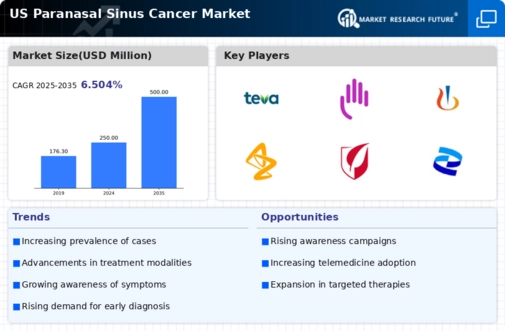The US Paranasal Sinus Cancer Market is witnessing significant competitive dynamics, driven by advancements in research and development, innovative treatment options, and an increasing understanding of the disease landscape. The market is characterized by a blend of established pharmaceutical giants and emerging players, each striving to develop targeted therapies and improve patient outcomes. With a growing emphasis on personalized medicine and biologics, companies are exploring novel therapeutic approaches, including immunotherapy and targeted therapies, as they aim to capture a larger market share.
Additionally, the competitive landscape is influenced by partnerships, collaborations, and strategic alliances, allowing players to leverage their strengths and expand their product offerings while navigating regulatory challenges.
Merck and Co
Merck and Co has established a strong presence in the US Paranasal Sinus Cancer Market by leveraging its robust pipeline of innovative therapies aimed at treating various forms of cancer, including paranasal sinus cancers. The company is recognized for its commitment to research and development, which enables it to stay at the forefront of oncology advancements. Merck's strengths lie in its extensive experience, scientific expertise, and comprehensive understanding of the disease, positioning it favorably against its competitors.
The company is known for its significant investments in clinical trials, contributing to a better understanding of paranasal sinus cancer while enhancing its reputation as a leader in oncology care.
Teva Pharmaceutical Industries
Teva Pharmaceutical Industries holds a notable position within the US Paranasal Sinus Cancer Market, focusing on providing accessible treatment options for patients battling this type of cancer. The company’s portfolio includes a range of pharmaceuticals that cater to oncology needs, making it a key player in addressing the challenges faced by individuals affected by paranasal sinus cancer. Teva's strengths are rooted in its ability to deliver high-quality medications and a commitment to patient-centric approaches, which plays a crucial role in enhancing treatment outcomes.
Furthermore, Teva has a history of strategic mergers and acquisitions that have expanded its footprint in the US market, enabling it to enhance its product offerings and capabilities in serving the needs of patients and healthcare providers in the oncology space.




















